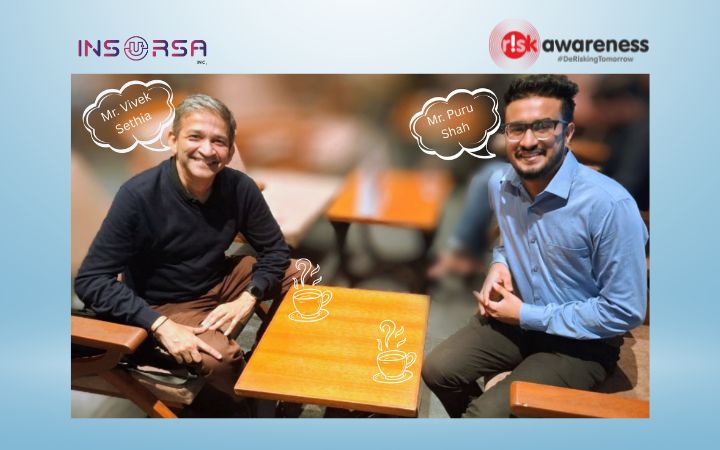An Interview with Vivek Sethia, Founder & President, Insursa Inc.
In an era where technology is rewriting the rules of engagement across industries, insurance remains one of the most complex and ripe sectors for disruption. At the forefront of this transformation is Insursa Inc., an AI-first insurtech firm built with a singular focus on making insurance faster, smarter and more inclusive.
Founded by global insurance technology veteran Vivek Sethia, with over two decades of experience, Insursa is re-engineering the way insurers operate from underwriting and claims to policy issuance and risk strategy. Unlike broad-spectrum tech providers, Insursa speaks the native language of insurers, combining deep domain expertise with cutting-edge innovation in areas such as Agentic AI, predictive analytics and hyper-automation.
What sets Insursa apart in a crowded insurance technology market?
Vivek Sethia: At Insursa, we bring a single-minded focus to the insurance industry. Unlike broader Insurtech companies, we’re built by insurance people, for insurance transformation. What sets us apart is our ability to combine deep domain expertise with the latest technologies like hyper-automation and Agentic AI, powered by Insursa’s proprietary Small Language Model (SLM). Our goal is simple: help insurers leapfrog outdated systems and launch future-ready capabilities. For many insurers in emerging markets, it’s not about catching up — it’s about skipping ahead, securely and intelligently.
Can you give examples of how Insursa technology helps increase premium income, not just reduce costs?
Absolutely. Revenue generation is central to our platform design. For instance, our Document Intelligence solution can extract data from scanned documents and generate a quote in just 30 seconds followed by instant policy issuance in under a minute. This enables insurers to capitalize on every lead, serve walk-in customers faster and reduce quote-to-bind cycles from hours to seconds. These improvements are not just operational wins — they’re direct drivers of premium growth.
How are you improving policyholder servicing, especially in the claims process?
Claims are the true test of trust. At Insursa, we’ve AI-embedded automation across the entire claims journey from registration to fraud detection. Our solutions have helped insurers achieve up to 70% automation in the claims process. This reduces turnaround time, increases transparency and lowers administrative overhead. At the same time, built-in AI engines flag suspicious patterns early enabling faster, more accurate decisions without compromising integrity or customer satisfaction.
How is Insursa helping insurers become more proactive rather than reactive in their strategies?
Our Predictive Intelligence platform is designed to provide insurers with a clear profitability roadmap. It analyses both historical and real-time data to recommend the optimal product mix, pricing strategies, and rating adjustments. Whether it’s refining underwriting thresholds or aligning offerings with evolving customer behaviour, our system helps insurers make proactive decisions that lead to stronger premium income. It’s not just analytics — it’s an intelligent advisor guiding insurers toward sustainable, profitable growth.
Risk management is core to any insurer’s long-term viability. How does Insursa support this?
Risk management is no longer confined to actuarial models and post-loss evaluations — it now begins at the point of engagement. At Insursa, we embed AI into every step of the insurance value chain, enabling real-time risk insights during underwriting, claims, and even customer onboarding process. Our platforms integrate external data sources — like credit score, driving history, weather, traffic, and other relevant databases — into risk scoring engines that dynamically adapt during the underwriting process. This allows insurers to shift from reactive risk handling to intelligent risk prevention — safeguarding both profitability and customer trust.
Looking ahead, where do you see the biggest shifts in insurance risk architecture over the next 3–5 years and what strategic role do you envision Insursa playing in shaping that future?
We believe the next evolution of insurance risk architecture will be defined by three shifts: contextual risk evaluation, continuous underwriting, and AI-driven small language models. Traditional static underwriting will give way to dynamic, real-time risk assessment using data from IoT devices, mobility patterns, and behavioural insights. We also foresee insurers placing stronger emphasis on risk accumulation — understanding and managing the interconnected risk exposures across product lines, geographies, and customer segments.
At Insursa, our strategic role will be to provide the technology infrastructure to support this transformation — especially through our AI-powered Predictive Intelligence with Small Language Model (SLM) frameworks. We’ll help insurers implement systems that not only quantify risk accurately but also adapt product, pricing, and relevant conditions in real-time.
From Process to Purpose
The insurance industry is at a turning point. With technology advancing rapidly, the real challenge is applying it with purpose. Insurers today are rethinking how they build trust, stay agile and respond to evolving risks not just through speed, but through smarter, more thoughtful decisions. The future lies in moving from process-driven systems to outcome-driven strategies. In this shift, Insursa is helping insurers lead with clarity, combining practical innovation with real, measurable impact.
About Vivek Sethia
Vivek Sethia is the Founder and President of Insursa Inc., with over 25 years of global experience delivering insurance technology solutions. He has led digital transformation for over 100 insurers across 40 countries and is widely regarded as a thought leader in building agile, AI-led insurance platforms tailored for real-world outcomes.







